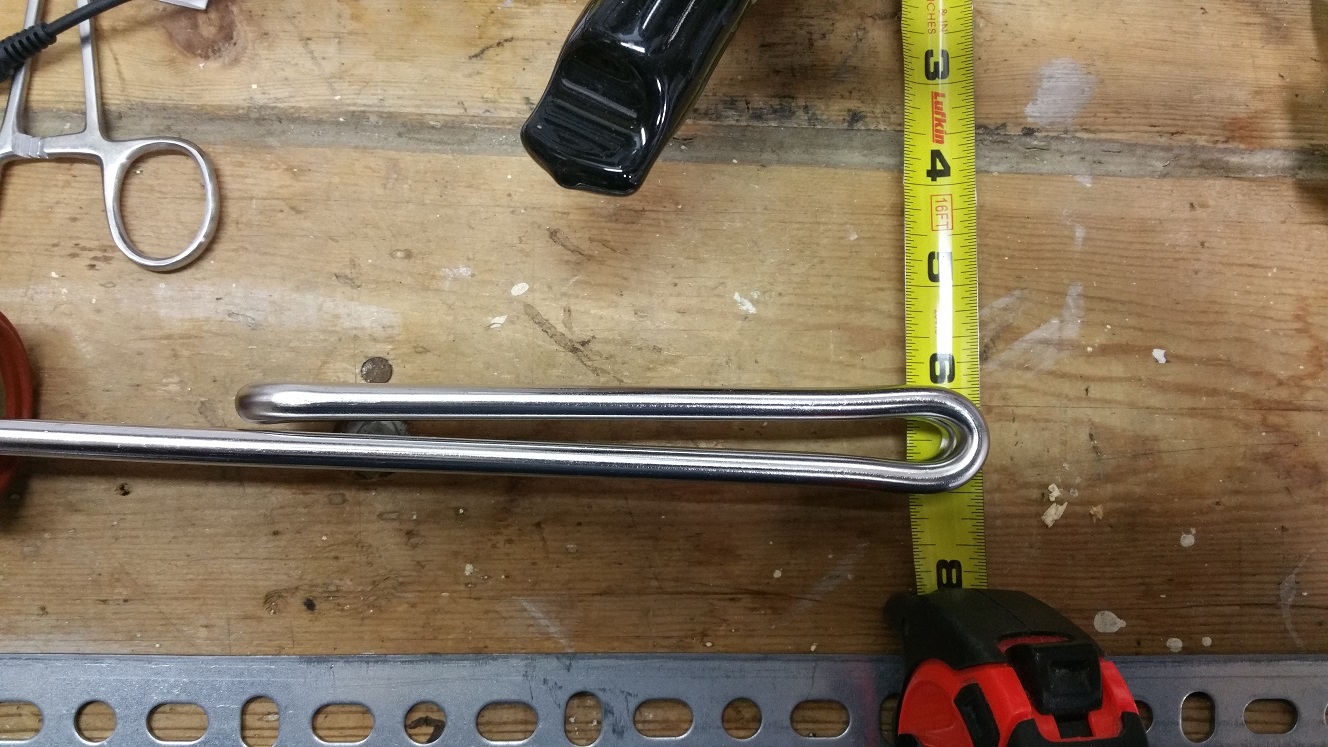specialkayme
Well-Known Member
Planning/pricing an eBIAB setup with a Spike kettle (check https://www.homebrewtalk.com/forum/threads/designing-a-spike-kettle.657014/ if you want more information). I'll need to do my own wiring to the kettle.
Currently I don't have a 210v outlet in my kitchen/dining room, where I'll likely brew. My laundry room is 10 feet away though, and it has a 210v dryer outlet. I could pigtail a series outlet in the wall, but I don't feel comfortable doing that, and I don't want to pay the $1k for the electrician to come out and do it. So I'm thinking I'm just going to build an extension cord/splitter.
I'm thinking I take one of these dryer plugs (https://www.amazon.com/dp/B00IPUA5ZW/?tag=skimlinks_replacement-20) which will go from the current outlet and wire it to go into a junction box (https://www.amazon.com/dp/B075DKNQSM/?tag=skimlinks_replacement-20). On one side of the junction box, I'll install a standard dryer outlet (https://www.amazon.com/dp/B000BQSU8C/?tag=skimlinks_replacement-20) and pigtail it to the outlet that will serve the heating element on the other side of the box (https://www.amazon.com/dp/B00002NAT9/?tag=skimlinks_replacement-20). Then I hook up a GCFI extension to that plug (https://www.amazon.com/dp/B00OZY2Y4C/?tag=skimlinks_replacement-20) and an extension cord from that to the heating element (https://www.amazon.com/dp/B00DMGSQSC/?tag=skimlinks_replacement-20).
Total cost appears to be roughly $255.98, plus some 10/3 wiring to do the pigtail connection in the junction box. More than half of that is the GCFI cord, but it's about the same price as installing a GCFI breaker, and at that point I don't have to go outside to the breaker to reset it in the event it trips.
Does that seem about right? Is there a cheaper option I should be considering?
Is there an (not so expensive) option available for varying the power to the heating unit now, or should I wait to consider adding that later?
Currently I don't have a 210v outlet in my kitchen/dining room, where I'll likely brew. My laundry room is 10 feet away though, and it has a 210v dryer outlet. I could pigtail a series outlet in the wall, but I don't feel comfortable doing that, and I don't want to pay the $1k for the electrician to come out and do it. So I'm thinking I'm just going to build an extension cord/splitter.
I'm thinking I take one of these dryer plugs (https://www.amazon.com/dp/B00IPUA5ZW/?tag=skimlinks_replacement-20) which will go from the current outlet and wire it to go into a junction box (https://www.amazon.com/dp/B075DKNQSM/?tag=skimlinks_replacement-20). On one side of the junction box, I'll install a standard dryer outlet (https://www.amazon.com/dp/B000BQSU8C/?tag=skimlinks_replacement-20) and pigtail it to the outlet that will serve the heating element on the other side of the box (https://www.amazon.com/dp/B00002NAT9/?tag=skimlinks_replacement-20). Then I hook up a GCFI extension to that plug (https://www.amazon.com/dp/B00OZY2Y4C/?tag=skimlinks_replacement-20) and an extension cord from that to the heating element (https://www.amazon.com/dp/B00DMGSQSC/?tag=skimlinks_replacement-20).
Total cost appears to be roughly $255.98, plus some 10/3 wiring to do the pigtail connection in the junction box. More than half of that is the GCFI cord, but it's about the same price as installing a GCFI breaker, and at that point I don't have to go outside to the breaker to reset it in the event it trips.
Does that seem about right? Is there a cheaper option I should be considering?
Is there an (not so expensive) option available for varying the power to the heating unit now, or should I wait to consider adding that later?
Last edited by a moderator:










